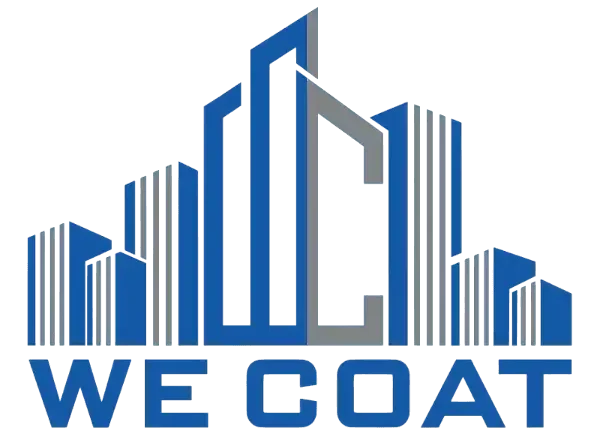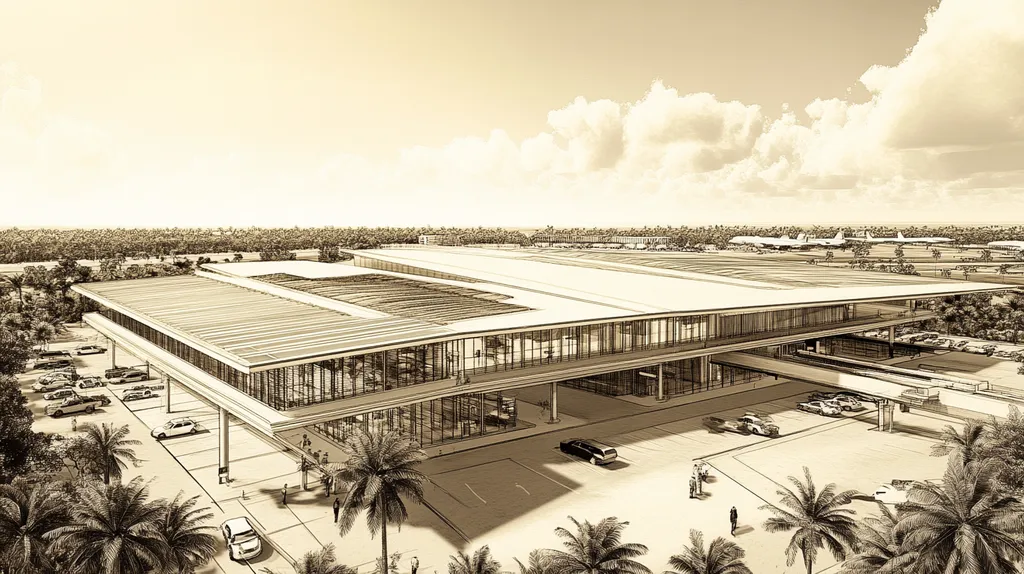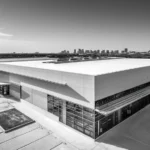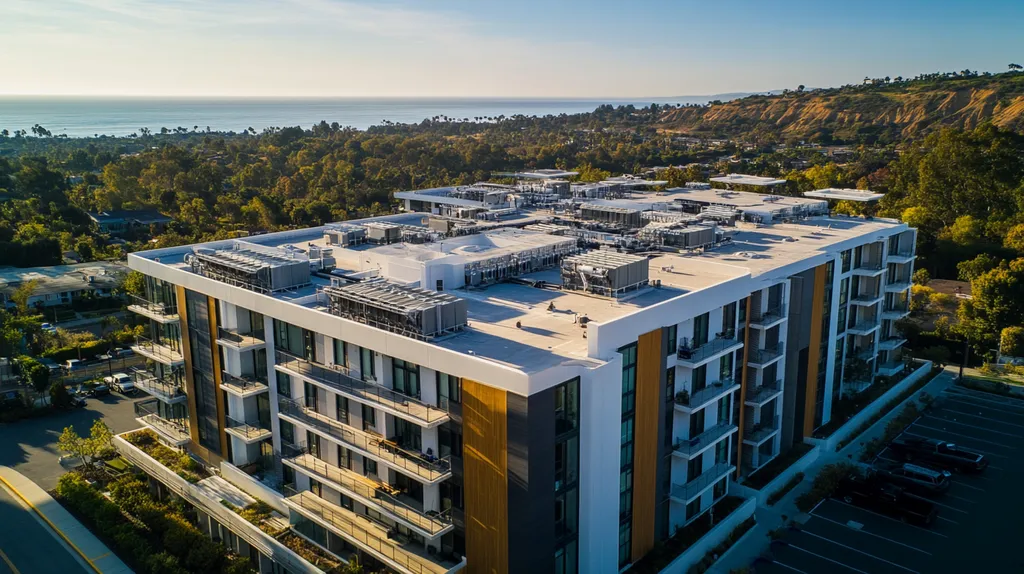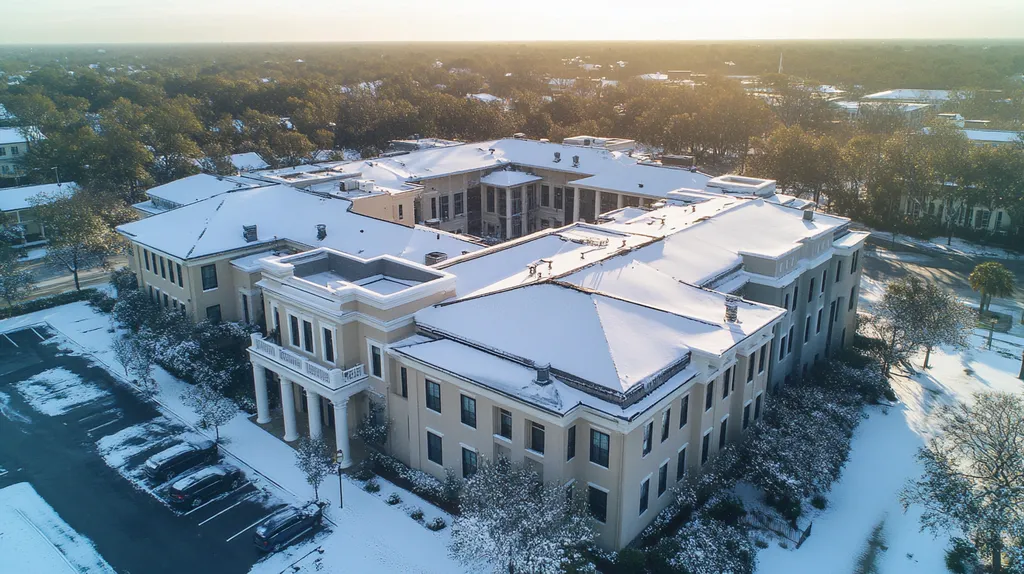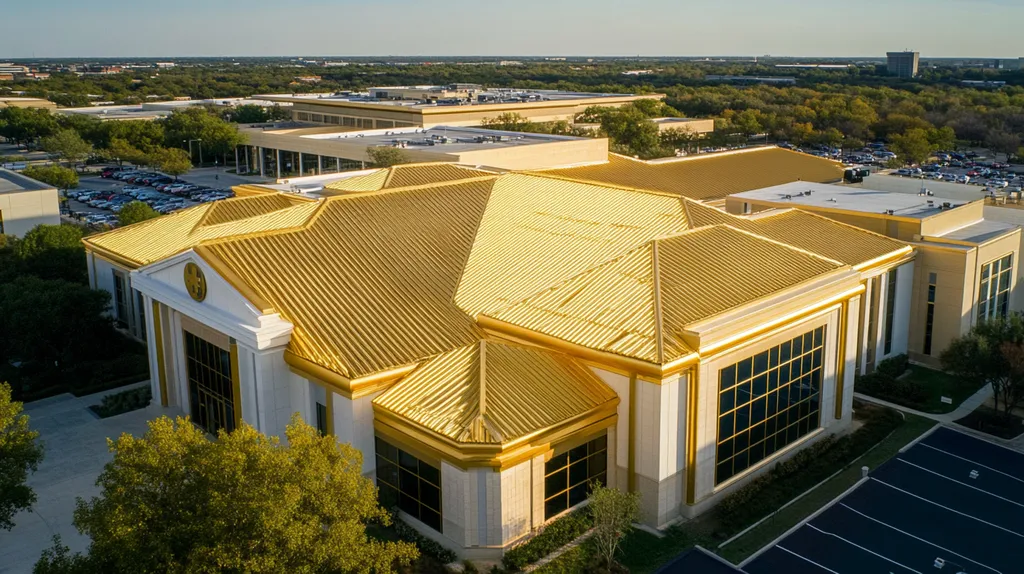Federal regulations for commercial roofing represent a complex web of requirements that impact over $40 billion in annual construction projects across the United States. Non-compliance can result in devastating consequences, from OSHA fines exceeding $145,000 per violation to complete project shutdowns.
For property owners and facility managers, understanding these regulations is not optional – it’s essential for protecting assets, ensuring worker safety, and avoiding costly penalties.
This comprehensive guide examines the critical aspects of federal roofing regulations, from fundamental building codes to advanced sustainability requirements, providing actionable insights for successful project implementation.
SECTION 1: FUNDAMENTAL CONCEPTS
Navigating federal regulations is essential for the success of commercial roofing projects. Ignoring these requirements can have severe financial and safety implications. In fact, the U.S. invests over $15 billion each year to address workplace injuries and fatalities caused by safety violations. This section outlines the key aspects of federal building codes, OSHA regulations, and environmental compliance that facility managers must understand to ensure both asset protection and workforce safety.
Understanding Federal Building Codes
Federal building codes are foundational rules that ensure safety, sustainability, and structural integrity in commercial roofing. These regulations are crafted to guarantee that buildings protect their occupants by minimizing hazards. For instance, the International Building Code (IBC) specifies standards for materials, design, and construction practices that must be followed.
Non-compliance with these codes can endanger lives and lead to costly renovations or fines. Additionally, states may implement local amendments to enhance these federal codes. Therefore, property owners must stay informed about both federal and state regulations to ensure compliance.
Engaging with a roofing professional who is well-versed in these codes can prevent costly mistakes during design and installation. A focus on compliance from the start of the project can lead to significant savings in time and money.
Since building codes are regularly updated to reflect new technologies and materials, staying informed is paramount. As roofing innovations emerge, corresponding regulations may evolve as well, necessitating a proactive approach to compliance in any effective roofing strategy.
OSHA Regulations Overview
The Occupational Safety and Health Administration (OSHA) is crucial for maintaining workplace safety standards. For roofing projects, OSHA regulations dictate various aspects, from tool usage to employee training. Compliance is essential; failure to adhere to these rules can result in hefty penalties and even project halts.
In 2020 alone, OSHA issued over 2,000 citations to roofing companies, many due to inadequate fall protection—which is vital in such a perilous field. Tackling these safety challenges head-on not only shields employees but also enhances project efficiency.
Employers must provide proper safety equipment, implement thorough training programs, and ensure work practices align with OSHA guidelines. Roofing contractors should weave safety protocols into every stage of their projects, including regular site inspections and safety meetings.
Moreover, investing in safety can boost morale and productivity. Workers who feel protected are more inclined to excel, which positively impacts project outcomes. Industry leaders who prioritize OSHA compliance often witness a beneficial effect on their financial performance.
Environmental Compliance Basics
Environmental regulations play an increasingly critical role in commercial roofing. Adhering to these guidelines not only helps preserve ecosystems and public health but also ensures legal compliance. For example, the Environmental Protection Agency (EPA) regulates harmful pollutants that could arise from roofing materials and processes.
Non-compliance with environmental standards can lead to significant fines and legal challenges, raising project costs considerably. Embracing sustainable roofing practices, such as utilizing low-VOC materials, meets regulatory requirements while appealing to clients who prioritize environmental responsibility.
Furthermore, many states enforce stormwater management regulations that influence how roofing projects should be executed. Effective drainage systems and materials are essential to mitigate runoff, especially in urban settings. Understanding both local and federal environmental laws is key to achieving compliance and embracing responsible development.
Incorporating environmental considerations into roofing initiatives can also yield financial advantages. Many states offer incentives for adopting sustainable practices, leading to long-term cost savings. As regulations evolve, proactively addressing environmental compliance will play an increasingly vital role in roofing management.
SECTION 2: SYSTEM COMPONENTS
Understanding the system components of commercial roofing is not just a theoretical exercise; it is a critical aspect of ensuring compliance with federal regulations. With over 100 million square feet of commercial roofing installed annually, adherence to these regulatory standards safeguards both financial investments and occupant safety. Choices like improper material selection can lead to structural failures, dangerous safety hazards, and costly repairs. This section delves into the essential elements of roofing systems, focusing on materials, structural integrity, and safety features.
Roofing Materials and Standards
The choice of roofing materials is vital for both regulatory compliance and long-term performance. Federal standards specify material properties like fire resistance and energy efficiency. Selecting materials that meet these standards not only boosts safety but also optimizes energy use within buildings.
For instance, the Energy Policy Act outlines requirements for energy-efficient roofing options. Non-compliance can lead to penalties and inflated operational costs. Property owners should verify that materials carry proper certifications from organizations like the American Society for Testing and Materials (ASTM).
Manufacturers must also provide transparent documentation on their products’ compliance with federal regulations. Regular audits can assist facility managers in staying up-to-date with evolving material standards over time.
In today’s market, where sustainability is increasingly prioritized, opting for environmentally friendly materials can yield broader benefits. Products with Energy Star ratings not only reduce energy expenses but may also qualify for federal incentives.
Structural Integrity and Load Capacity
Ensuring structural integrity and adequate load capacity must be a priority of any roofing project, as these are federal requirements. Buildings need to withstand various stresses, including weather conditions and extra loads from equipment or foot traffic. Ignoring these regulations can lead to catastrophic roof failures.
The International Building Code (IBC) provides guidelines for load calculations that must be adhered to. For example, roofs in snow-heavy regions need to be designed to handle the additional weight from snow accumulation. Facility managers should be well-acquainted with their local codes to ensure that roofing systems are appropriately designed.
Conducting regular inspections is crucial for assessing a roof’s condition. Signs of wear and tear, such as sagging or cracking, might indicate that the roof is failing to meet its load requirements. Addressing these issues proactively helps avoid future liabilities.
Additionally, collaborating with licensed structural engineers during the roofing process can help ensure compliance with federal requirements. This collaboration is particularly vital in high-stakes industrial environments where the margin for error is minimal.
Safety Features and Fall Protection
Safety in roofing projects is of utmost importance, especially concerning federal regulations on fall protection. The Occupational Safety and Health Administration (OSHA) enforces strict safety standards to help mitigate risks during roofing activities.
For instance, installing guardrails and safety nets can significantly reduce the chances of falls on commercial roofing projects. Compliance with these safety features is not just a guideline; it is a mandatory requirement that can literally save lives.
Training staff on proper safety protocols is equally vital. Conducting regular safety drills and supplying personal protective equipment (PPE) can greatly minimize the likelihood of accidents. Insufficient training and safety measures can lead to serious fines and higher insurance costs for companies.
Moreover, fostering a culture of safety can enhance overall project efficiency. Teams confident in their safety practices can focus more on delivering quality work rather than worrying about potential hazards.
SECTION 3: IMPLEMENTATION METHODS
Navigating federal regulations for commercial roofing projects is more than just a checklist; it’s a critical factor in determining a project’s success. Noncompliance can lead to significant financial penalties and unwelcome project delays, with studies showing that 30% of roofing projects experience slowdowns due to regulatory issues. To avoid these risks, property owners and facility managers must grasp key areas such as permitting, zoning compliance, and adherence to sustainability standards.
Permitting and Zoning Compliance
Securing the right permits and following zoning regulations is vital for the success of roofing projects. Every municipality has unique codes that dictate everything from structural integrity to aesthetic concerns. Noncompliance can halt work entirely and result in steep fines.
It’s crucial for property owners to investigate local building codes before starting any project. Federal guidelines often intersect with state and local regulations, adding an extra layer of complexity. A clear understanding of these regulations can minimize the risk of unexpected interruptions to the project timeline.
In some cases, properties in historic districts are subject to more rigorous guidelines. For these projects, engaging with local historical societies is often necessary to ensure compliance. This proactive approach can prevent significant redesigns or costly alterations later on.
Hiring qualified contractors who are well-versed in local regulations can make the permitting process smoother. Their industry knowledge can speed up approvals and help avoid costly mistakes. Adhering to zoning laws is not merely about legality; it’s also essential for overall project success.
Installation Best Practices
Implementing best practices during installation is crucial for creating durable and compliant roofing systems. Federal regulations emphasize safety protocols that protect both workers and the environment. Proper installation is key to avoiding future liabilities and expensive repairs.
Using certified professionals who are familiar with cutting-edge techniques ensures compliance with federal guidelines. These technicians are typically knowledgeable about the latest materials and installation methods that meet regulatory standards. Choosing appropriate materials is essential for maintaining the overall integrity of the roofing system.
Additionally, regular training should be provided for all installation teams. Keeping up with evolving regulations and the latest installation techniques can significantly reduce risk. Committing to best practices results in enhanced safety and durability, ultimately securing the financial investment in the roofing project.
Finally, conducting post-installation inspections is crucial to identify potential compliance issues early in the process. Addressing these evaluations promptly can prevent larger problems down the line. Focusing on best practices is not just about meeting regulations; it’s about protecting assets and providing peace of mind.
Compliance with Sustainability Standards
As sustainability becomes a greater priority, meeting federal standards in roofing projects is no longer optional. Compliance isn’t just a matter of preference; failing to adhere can result in penalties. Incorporating green technologies and materials is essential for modern commercial roofing initiatives.
Federal guidelines promote the use of energy-efficient materials that not only lower operational costs but also benefit the environment. For instance, cool roofing materials help reflect sunlight, reducing energy consumption and keeping buildings cooler.
Property owners should consider certifications such as LEED, which validate compliance with sustainability standards. These certifications can lead to access to incentives and tax benefits, further enhancing the financial feasibility of the project. Additionally, environmentally responsible businesses often enjoy stronger reputations in the marketplace.
Working with sustainability consultants can simplify the process of meeting these standards. Their expertise ensures that projects not only comply with federal regulations but also align with the owner’s environmental goals. Ultimately, prioritizing sustainability compliance can differentiate a property in an increasingly competitive market.
SECTION 4: MAINTENANCE REQUIREMENTS
Maintaining a commercial roof is not just an afterthought; it is a crucial aspect of complying with federal regulations. Neglecting regular maintenance can result in significant damage, expensive repairs, and safety violations. In fact, around two-thirds of roof failures are attributed to inadequate maintenance according to the National Roofing Contractors Association. This section examines the importance of regular inspections, guidelines for repairs and replacements, and effective record-keeping practices.
Regular Inspection Protocols
Regular inspections are vital for extending the lifespan of a commercial roof and fulfilling federal compliance standards. These assessments should occur at least twice a year—preferably in spring and fall—to identify potential issues before they escalate. Property owners should also arrange for inspections following severe weather events, where damage might be hidden from immediate view.
During these inspections, qualified professionals should look for signs of wear, leaks, and overall structural integrity. If significant problems arise, immediate action is necessary to prevent further damage. Regular inspections serve not just as a preventative measure but also as documentation that can be essential during regulatory audits.
Involving trained roofing experts can greatly enhance the quality of inspections. Professionals possess the expertise to spot issues that property owners may overlook, ensuring a thorough assessment. This proactive strategy maximizes compliance and substantially extends the roof’s useful life.
Additionally, property owners should create a tailored checklist specifically designed for their roofing type. A customized protocol streamlines the inspection process and helps ensure that critical areas receive attention.
Repair and Replacement Guidelines
Repairs and replacement should follow federal guidelines emphasizing safety and durability. Any roofing work must meet established regulations, ensuring that only certified materials designed for the specific environment are utilized. An organized approach to repairs can prevent unforeseen expenses and enhance the roof’s longevity.
When repairs are warranted, enlisting experienced roofing professionals is essential. They should adhere to manufacturer guidelines to guarantee that repairs are completed effectively and correctly. Cutting corners during repairs can create significant issues later, such as safety hazards and increased susceptibility to adverse weather.
Deciding when to replace the roof can be complex. Property owners need to assess the roof’s age and condition, ensuring existing materials comply with updated federal regulations. Advances in roofing technology may offer energy-efficient solutions that were not available at the time of the original installation.
Finally, obtaining multiple quotes and ensuring compliance with both federal and local regulations during new roofing installations is crucial. This diligent planning helps avoid delays and excessive costs during replacement projects.
Record-Keeping and Documentation
Meticulous record-keeping for roofing maintenance is not merely a best practice; it is often a compliance requirement mandated by federal law. Property owners must maintain comprehensive logs of inspections, repairs, and any modifications to roofing systems. This documentation becomes critical proof of compliance during regulatory inspections.
Records should include the date of each inspection, findings, and any corrective actions taken. Utilizing digital record-keeping systems simplifies tracking and makes retrieving necessary information straightforward, especially in emergencies or during audits.
Moreover, documenting the involvement of qualified professionals for all maintenance work is essential. This not only aids in compliance but also protects property owners from liability in the event of disputes or damage claims related to the roof.
By prioritizing thorough documentation, property owners empower themselves to respond effectively to regulatory inquiries, ultimately minimizing potential penalties and improving their overall property management practices.
SECTION 5: PERFORMANCE METRICS
Performance metrics are critical for ensuring that commercial roofing systems not only comply with federal regulations but also achieve their intended goals. Without proper tracking, 30% of commercial roofs experience early failure, leading to substantial financial losses. This section explores key metrics related to safety performance, energy efficiency, and durability to aid property owners in making informed decisions about their roofing investments.
Safety Performance Indicators
Worker safety is paramount in commercial roofing projects, and understanding safety performance indicators is essential for compliance with federal regulations. Key metrics include accident rates, adherence to OSHA standards, and the effectiveness of safety training programs.
Tracking the frequency and types of accidents not only demonstrates compliance but also highlights areas for improvement. Roofing companies that report higher incident rates may face penalties and potential project delays, making proactive safety measures critical.
Utilizing safety equipment that meets federal guidelines is essential to prevent workplace accidents. Regular evaluations of safety training programs guarantee that all workers are well prepared to minimize risks onsite.
By continuously monitoring these indicators, property owners and facility managers can cultivate a safer work environment. This commitment not only protects workers but also enhances overall project efficiency and compliance with safety regulations.
Energy Efficiency Metrics
In an era of rising energy costs, energy efficiency metrics are increasingly important in commercial roofing. Federal regulations encourage the use of energy-efficient materials and systems that will ultimately reduce operational expenses.
Key metrics, such as thermal performance ratings, assess how well roofing materials resist heat transfer. This capability directly affects heating and cooling costs, impacting overall energy consumption.
Moreover, installations of reflective roofing materials can significantly lower energy usage. Research shows that energy-efficient roofs can cut cooling costs by as much as 30%, benefiting both the environment and the organization’s finances.
To ensure ongoing energy savings, conducting regular energy audits is crucial. These evaluations help verify compliance with federal standards and reveal opportunities for further enhancements to energy performance.
Durability and Lifespan Evaluation
Evaluating durability and lifespan is vital to maintaining the integrity of commercial roofing systems. Federal regulations typically establish standards for material longevity that influence project selections and cost-effectiveness.
Roofing materials need to endure various weather conditions without significant wear. Investing in high-quality materials can result in long-term savings; for instance, a robust membrane may last over 30 years compared to alternatives requiring replacement in less than a decade.
Comprehensive durability testing methods, such as accelerated aging tests, provide valuable insights into expected lifespans. Utilizing these evaluations enables property owners to make sound investments aligned with budget constraints and regulatory requirements.
Lastly, understanding the total cost of ownership—installation, maintenance, and eventual replacement—allows facility managers to budget effectively. This holistic viewpoint ensures all aspects of durability and lifecycle management are thoughtfully considered.
SECTION 5: PERFORMANCE METRICS
Performance metrics are essential for ensuring commercial roofing systems meet federal regulations and achieve their intended functions. Poor tracking can lead to premature roof failures, with studies indicating that as many as 30% of commercial roofs fail early due to inadequate oversight. This section delves into critical metrics surrounding safety performance, energy efficiency, and durability, empowering property owners to make well-informed decisions regarding their roofing systems.
Safety Performance Indicators
Safety is a top priority in commercial roofing projects where compliance with federal regulations is mandatory. Key safety performance indicators encompass accident rates, adherence to OSHA standards, and the quality of safety training initiatives.
Monitoring accident frequency and type not only serves as proof of compliance but also reveals specific areas needing improvement. Roofing firms reporting higher incident rates risk penalties or project delays, making a proactive approach to safety critical.
Utilizing safety equipment that meets stringent federal standards is also essential. Lack of compliance can result in workplace accidents, endangering both workers and the company’s financial stability. Regularly evaluating the effectiveness of safety training programs is vital for maintaining a safe work environment.
By actively tracking and improving these safety performance indicators, property owners and facility managers can significantly reduce risks. This diligent approach protects workers and enhances the overall efficiency and compliance of roofing projects.
Energy Efficiency Metrics
Energy efficiency is increasingly vital in commercial roofing, particularly as energy costs surge. Federal regulations advocate for energy-efficient materials and practices that can decrease operational costs while benefiting the environment. Key metrics, such as thermal performance ratings, play a significant role in this context.
Thermal performance ratings assess how effectively roofing materials resist heat transfer, which directly impacts a building’s heating and cooling expenses. Choosing the right roofing system based on these metrics can lead to substantial energy savings.
The use of reflective roofing materials also plays a crucial role in lowering energy consumption. Studies indicate that energy-efficient roofs can reduce cooling costs by up to 30%, enhancing both environmental and financial outcomes.
Regular energy audits are indispensable for evaluating ongoing savings. These assessments help ensure compliance with federal standards while identifying opportunities for future upgrades aimed at enhancing energy efficiency.
Durability and Lifespan Evaluation
Evaluating the durability and lifespan of roofing materials is fundamental for maintaining the integrity of commercial roofing systems. Federal regulations often set standards for material longevity, directly influencing project decisions and cost-effectiveness.
Roofing materials must be durable enough to withstand varying weather conditions without significant degradation. Investing in high-quality materials may yield long-term savings; for example, a reliable membrane can last over 30 years, while lesser options might need replacement in just 10 years.
Durability testing methods, including accelerated aging tests, provide valuable insights into anticipated material lifespans. These evaluations empower property owners to make informed choices that adhere to budgetary constraints and regulatory requirements.
Lastly, understanding the total cost of ownership—factoring in installation, maintenance, and eventual replacements—allows facility managers to budget effectively and make strategic roofing investments. This comprehensive perspective ensures that durability and lifespan considerations are thoroughly addressed.
The Bottom Line
Federal regulations for commercial roofing affect over $40 billion in annual construction projects, with non-compliance penalties reaching up to $145,000 per violation.
Success in commercial roofing requires a comprehensive understanding of building codes, OSHA requirements, and environmental standards that continue to evolve each year.
Property owners and facility managers must prioritize regular inspections, maintain detailed documentation, and implement proper safety protocols to avoid costly penalties and project shutdowns.
As sustainability requirements increase and energy efficiency standards become more stringent, staying ahead of regulatory changes through proper planning and professional guidance remains critical for protecting both assets and investments.
The future of commercial roofing depends on balancing compliance requirements with innovative solutions that enhance building performance while meeting federal guidelines.
FREQUENTLY ASKED QUESTIONS
Q. Why are federal building codes important for commercial roofs?
A. Federal building codes ensure safety and integrity in commercial roofing. Adhering to these codes protects occupants and minimizes hazards. Non-compliance can lead to severe financial penalties and safety issues, which can complicate future renovations or repairs.
Q. How do roofing materials affect federal compliance for my commercial roof?
A. The choice of roofing materials can significantly impact compliance. Federal standards specify material qualities like fire resistance and energy efficiency. Selecting compliant materials helps optimize safety and minimize operational costs, ensuring your roof meets regulatory requirements.
Q. What role does OSHA play in commercial roofing projects?
A. OSHA sets safety standards crucial for protecting workers during commercial roofing projects. Compliance with these regulations reduces the risk of accidents and ensures a safe working environment. Investing in safety practices aligned with OSHA guidelines also boosts efficiency and morale.
Q. How do I ensure compliance with permitting processes for my industrial roof?
A. To ensure compliance, thoroughly research local zoning regulations and obtain necessary permits. Each municipality has unique codes that dictate roofing standards. Engaging knowledgeable contractors can streamline this process and avoid delays or fines associated with missing paperwork.
Q. Why is regular maintenance essential for my commercial roofing system?
A. Regular maintenance is crucial for compliance and extends the life of a commercial roof. Inadequate upkeep can lead to safety violations and costly repairs. Documenting inspections and repairs is also essential for regulatory audits, helping maintain compliance and avert penalties.
Q. What key performance metrics should I monitor for my commercial roof?
A. Monitor metrics related to safety performance, energy efficiency, and durability. These indicators not only ensure compliance with federal regulations but also help identify areas needing improvement. Regular assessments enable informed decisions that protect your investment and reduce overall costs.
Q. How can I adopt environmentally friendly practices for my industrial roof?
A. Adopting sustainable practices involves selecting energy-efficient materials and technologies. Materials with certifications, like Energy Star ratings, are ideal as they meet federal standards. Additionally, working with sustainability consultants can ensure your project complies with environmental regulations and benefits from incentives.
